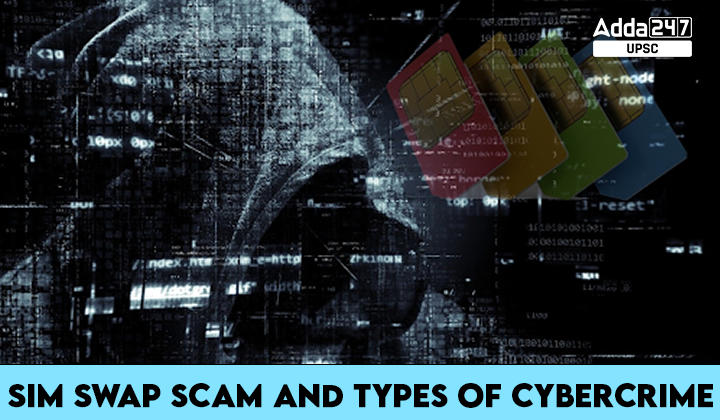Table of Contents
In today’s digital age, as technology advances and our reliance on it grows, cybercriminals are finding innovative ways to exploit the vulnerabilities of individuals and organizations. Cybercrime encompasses a wide range of illegal activities conducted through the internet and electronic devices. One such emerging threat is the SIM swap scam, a sophisticated cybercrime that targets bank accounts. In this comprehensive article, we will delve into the intricacies of the SIM swap scam, understand why victims receive missed calls, and explore ways to protect themselves from falling prey to this type of fraud. Additionally, we will provide insights into different types of cybercrime and how to guard against them.
What is Cybercrime?
- Cybercrime refers to any criminal activity that takes place in the digital realm. It involves using technology, the internet, or electronic devices to commit illegal acts.
- The scope of cybercrime is vast and continues to evolve as technology advances. Here are some common types of cybercrime:
Types of Cybercrime
SIM Swap Scam
- The SIM swap scam is a sophisticated cybercrime where fraudsters aim to gain unauthorized access to a victim’s bank accounts.
- Fraudsters obtain personal details through techniques like phishing or vishing, involving malicious links, attachments, or phone calls to extract sensitive information.
- After acquiring personal details, they visit a mobile operator’s retail outlet and pose as the victim to acquire a duplicate SIM card.
- The fraudsters divert activation messages and details to the duplicate SIM, allowing them to intercept banking authorization messages and OTPs, thus gaining access to the victim’s bank account.
Phishing
- Phishing is a common cybercrime where fraudsters send unsolicited emails, messages, or websites designed to appear legitimate.
- Victims are lured into clicking on malicious links or attachments, leading to the theft of personal and financial information.
Vishing:
- Vishing, short for voice phishing, involves phone calls from fraudsters who impersonate trusted entities, aiming to extract sensitive information from victims.
Ransomware: Ransomware is malicious software that encrypts a victim’s files, and the attacker demands a ransom for the decryption key.
Victims may lose access to critical data unless they pay the ransom, but there’s no guarantee the attacker will provide the decryption key.
Identity Theft:
Identity theft involves stealing personal information, such as Social Security numbers or credit card details, to commit fraudulent activities, including opening new accounts or making unauthorized transactions.
Protecting Yourself from Cybercrime
Now that we’ve explored the SIM swap scam and various types of cybercrime, let’s discuss how to protect yourself from falling victim to these digital threats.
Be Vigilant of Phishing and Vishing Attacks
Awareness is your first line of defense. Be cautious of unsolicited emails, messages, or phone calls, especially those containing malicious links or attachments.
Report suspicious messages and calls to appropriate authorities.
Don’t Neglect Messages or Ignore Missed Calls
- SIM swap scammers use tactics like flooding your phone with missed calls to divert your attention and potentially disrupt your network connectivity.
- Contact your mobile operator if you notice a surge in missed calls from unknown or suspicious numbers.
Change Bank Account Passwords Regularly
Regularly changing your bank account passwords is a good practice to maintain security, even if your personal details are compromised.
Register for SMS and Email Alerts
- Stay informed about your bank account transactions by registering for SMS and email alerts.
- These alerts can help you spot unauthorized transactions or suspicious behavior quickly.
Immediate Reporting of Fraud
- If you suspect you’ve fallen victim to a cybercrime, act promptly.
- Contact your bank authorities to block your account and initiate an investigation, helping prevent further financial losses and aiding law enforcement in catching the perpetrators.
Conclusion
In a world where digital technology plays an integral role in our lives, understanding the types of cybercrime and taking proactive measures to protect yourself is essential. The SIM swap scam is just one example of how cybercriminals exploit the digital landscape. By being vigilant, staying informed, and following best practices, individuals can significantly reduce their risk of falling victim to cybercrime. Stay safe, stay informed, and protect your digital life.



 TSPSC Group 1 Question Paper 2024, Downl...
TSPSC Group 1 Question Paper 2024, Downl...
 TSPSC Group 1 Answer key 2024 Out, Downl...
TSPSC Group 1 Answer key 2024 Out, Downl...
 UPSC Prelims 2024 Question Paper, Downlo...
UPSC Prelims 2024 Question Paper, Downlo...
